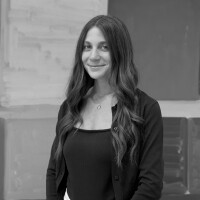
T his November, Sotheby's Palm Beach is pleased to present a comprehensive selling exhibition titled Condo x Haring: Expressions of the Imagination. The exhibition, on view 19 November – 31 December, will feature an eclectic group of works spanning various media by George Condo and Keith Haring, illustrating and commemorating the artists' deep friendship and the stylistic influence they had on each other.
George Condo (b. 1957) and Keith Haring's (1958-1990) friendship catalyzed in 1983 when Haring, along with Andy Warhol, attended an exhibition at Anderson Theater Gallery in New York, which included numerous works by a then 26-year-old Condo. Introduced by mutual friends, Haring was instantly captivated by the raw, avant-garde style of Condo’s abstract figuration, so much so that he personally purchased several of the works in the exhibition. By this time, Haring's popularity was explosive among the downtown New York graffiti and hip-hop scene and his new brand of Pop Art began growing not only domestically but internationally as well. Condo, who was still relatively unknown outside of New York, was enamored with the freedom and immediacy of Haring’s work and sought to learn more from this visionary and his iconic style. Soon after their initial encounter, Condo and Haring began meeting regularly and quickly became dear friends. On the earlier moments of their friendship, Condo reflected,
"When I was still living in New York…I saw Keith maybe one day a week and that day was the most important day for me. I'm so fascinated by what he does. That one-take idea of his art! The investigation of this automatic art is so totally pure! It's a universal meaning that Keith seems to have invented."
In addition to becoming social companions, Condo and Haring developed a collaborative, artistic relationship. They often visited each other and worked together in their respective studios. In fact, several of Condo's most recognized works (including Dancing To Miles, 1985, now in the collection of The Broad) were created in Haring's East Village studio. Until Haring’s death in February of 1990, the two remained extremely close confidants. Keith frequently traveled to France to visit George after he relocated his studio to Paris, and they were often seen together at international gallery and museum exhibitions. Perhaps most importantly, they had a profound influence on each other’s style that would ultimately help sculpt and define the art of their generation.
For Condo, Haring's practice and vision represented a departure from the formality of Post-War art of the 1960s and 1970s. Haring's signature iconography captured an everlasting, universal spirit of youthfulness and joy. The automatism of Keith's work that so inspired Condo was derived originally from abstractions that came to him "like automatic writing" when he was taking hallucinogens in his youth (Haring interviewed by David Sheff in "Keith Haring, An Intimate Conversation", Rolling Stone, August 1989). Similarly, Haring was influenced by Condo's intuitive and spontaneous process. As he witnessed Condo paint his Expanding Canvases, Haring wondered with admiration, "Man, I don't know how you continue to invent all these forms and shapes and things and not run into a repetitive situation. I like the way every single square inch is something different" (Haring quoted by Condo in Jeffrey Deitch, Suzanne Geiss & Julia Gruen, Keith Haring, New York, 2008, p. 428). Haring saw Condo as a burgeoning talent, a sophisticated mind and an inimitable tastemaker. He juggled the labor of creating intellectually challenging art while always surrounding himself with a cultured, diverse and eclectic network of friends. Both artists inherited the legacy of the masters who came before them – namely Picasso, Dubuffet, Calder and Pollock – and both revolutionized the idea of abstract figuration with their own transformative use of line and form.
Before Haring was officially diagnosed with AIDS in 1988, he was inspired by Condo's pursuit of creating artwork that would secure his name in the canon of art history and in turn, resist the finality of death. Haring writes in his journals,
“…there is one question George is asked about life and art and which is more important, and George said art is more important because it is immortal. This struck a very deep note inside me…I’m sure that what will live on after I die is important enough to make sacrifices of my personal luxury and leisure time now. Work is all I have and art is more important than life.”
In the wake of Haring's passing, Condo continues to fearlessly produce artwork that evolves unrelentingly and breaks the boundaries of Neo-Expressionism and abstract figuration. Upon reflecting on what their friendship meant, Condo has said, "all the fun and amazingly inspirational times spent together with Keith will always remain deep in my heart. He was at all times truly my best friend."
Read LessContacts







